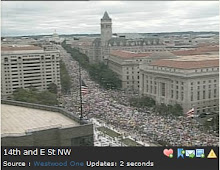The Morning Bell
MONDAY, OCT 26, 2009
The Transparent Costs of Cap and Trade
On June 26th of this year, the House of Representatives narrowly passed H.R. 2454, the American Clean Energy and Security Act. More commonly known as the Waxman-Markey bill (named after bill sponsors Reps. Henry Waxman (D-CA) and Ed Markey (D-MA), the 1,427-page bill tries to control global temperatures by creating a “cap” on greenhouse gas emissions, and then hoping that greenhouse emitters would “trade” emissions permits meet the cap. Under the scheme, the government would issue fewer allowances each year, causing the cost of the permits to rise. The cost of these allowances is a tax, and under Waxman-Markey, the tax would rise each year. As with any tax, it will ultimately be passed on to consumers in the form of higher energy and product prices.
On August 6th, the Heritage Foundation’s Center for Data Analysis released a report detailing the economic costs of the Waxman-Markey. Since energy is the lifeblood of the American economy, 85 percent of which comes from CO2-emitting fossil fuels, the Waxman-Markey bill’s arbitrary and severe restrictions on the current energy supply and infrastructure will not only have direct impact on consumers’ budgets through higher electric bills and gasoline prices, but also cause unnecessary inefficiencies at virtually every stage of production. CDA estimates that Waxman-Markey legislation would cost the average family-of-four almost $3,000 per year, cause 2.5 million net job losses by 2035, and a produce a cumulative gross domestic product (GDP) loss of $9.4 trillion between 2012 and 2035.
Surely our study did not produce the results Waxman and Markey expected. Earlier this month Reps. Waxman and Markey sent us, and a number of other institutions, a letter asking us to answer 33 methodological questions about the analytical techniques used in our study. We were delighted by Waxman and Markey’s letter since it is just the kind of thoughtful investigative work our lawmakers should do more often. For example, they asked if our model took into account an increase in private sector investments in research and development that would be sparked by the legislation and a new carbon market. Answer: It did. Our model incorporates both short and long-run responses to higher energy prices.
Waxman also asked if our model quantified any benefits of avoided climate change. Answer: It didn’t. Because according to estimates based on IPCC data, the Waxman-Markey bill would only impact global temperatures by .044 degrees C (about .09 degrees F) by 2050. There simply are no economic benefits from such a minuscule impact.
Waxman-Markey did not send their questions to some notable organizations that have conducted analysis of their bill like the Congressional Budget Office and the Brooking Institution. After we requested they do so, we have since received word that Waxman and Markey sent the same letter to the CBO. They had previously included the Environmental Protection Agency (EPA), Energy Information Administration (EIA), Massachusetts Institute of Technology (MIT), CRA International, the American Council for Capital Formation (ACCF), and the Natural Resource Defense Council (NRDC).
In the interests of an honest and transparent debate about the costs of cap and trade the Heritage Foundation has devoted a space on our website, www.heritage.org, where we have posted our answers in their entirety. We have formally invited the other organizations who were asked these questions to allow us to post their responses as well, in the interest of full transparency.
Let’s hope the Waxman-Markey questionnaire signals that a serious debate can now take place. American families deserve to be kept fully apprised of how Congress intends to act, and how those actions will most likely affect their pocketbooks, their jobs, and their lives.
Monday, October 26, 2009
Subscribe to:
Post Comments (Atom)
















No comments:
Post a Comment